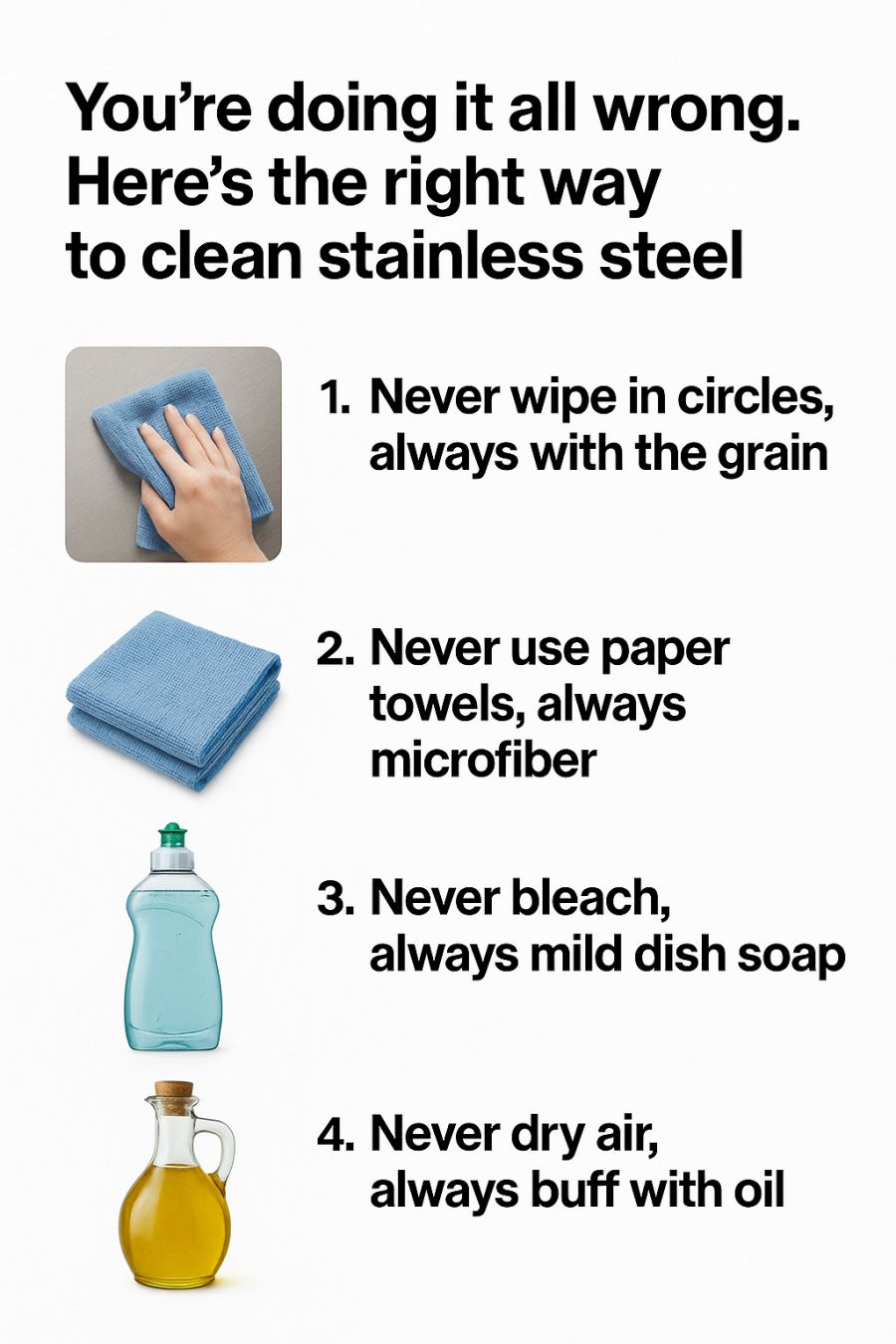If you look closely at your stainless steel surfaces, you’ll notice tiny lines or grains running in one direction. Cleaning with the grain means wiping in the same direction as these lines. This technique helps to avoid scratching the surface and ensures that any cleaning solution or residue is effectively removed.
Cleaning against the grain can leave streaks and scratches, as dirt and debris can become trapped in the fine lines. By following the grain, you reduce the risk of damage and achieve a cleaner, smoother finish. It’s a simple but crucial step in maintaining the appearance of your stainless steel.
3. Why Microfiber Cloths Are Essential
Microfiber cloths are a must-have tool for cleaning stainless steel surfaces. These cloths are made from tiny fibers that are able to pick up and trap dirt, dust, and grease effectively without scratching the surface. Unlike cotton cloths, microfiber is gentle yet highly absorbent, making it perfect for wiping away smudges and fingerprints.
When using a microfiber cloth, ensure it is clean and dry. A damp microfiber cloth can be used for initial cleaning, followed by a dry cloth to buff the surface to a shine. Avoid using rough sponges or scrubbing pads, as these can leave fine scratches that dull the appearance of your stainless steel.
4. Choosing the Right Cleaning Solutions
Not all cleaning solutions are suitable for stainless steel. Avoid harsh chemicals, abrasive powders, and products containing bleach or ammonia, as they can damage the protective layer of the metal. Instead, opt for solutions specifically designed for stainless steel or make your own gentle cleaner using household ingredients.
A simple and effective homemade cleaner can be made by mixing equal parts vinegar and water. Vinegar is a natural cleaner that cuts through grease and grime while being gentle on the surface. Always test any cleaner on a small, inconspicuous area first to ensure it doesn’t react negatively with your stainless steel.
5. Avoiding Common Mistakes: No Bleach
One of the most common mistakes people make when cleaning stainless steel is using bleach or bleach-based products. While bleach is a powerful disinfectant, it is also highly corrosive and can damage the protective chromium oxide layer on stainless steel surfaces.
Exposure to bleach can lead to pitting and corrosion, resulting in permanent damage. If you need to disinfect your stainless steel, use a mild solution of water and white vinegar or a commercial stainless steel cleaner that is safe for use on these surfaces.
6. The Benefits of Mild Dish Soap
